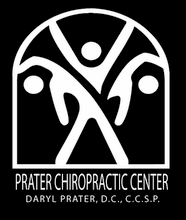
Stride outs are a beneficial and enjoyable workout that can improve leg speed, running efficiency and form. During the off-season when the focus is on base building mileage, they provide an easy way to keep legs fresh and speed sharp in preparation for the more aggressive workouts that come later in the training cycle.
These should be done after a good warm up, or can be done at the end of an easy run and on the road, grass or track. In the Beyond program, these have been incorporated into most of the easy recovery days. Stride outs are accelerations of approximately 100 meters each with a jog recovery of about 100 meters in between. If you heart rate train, it is not necessary to monitor heart rate for these workouts as your accelerations are short enough that your heart rate is still increasing when you slow to a jog.
The key to these is to accelerate smoothly up to full speed, then hold maximal speed for 40 – 50 meters. It is important not to run so fast, however, that you start to tighten up. This is not an all out 100 meter dash! During stride outs, you don’t want to strain, but practice running relaxed. The first part of each stride out will be used to gradually build to maximal speed.
During the stride out, concentrate on maintaining good running form and staying relaxed. Avoid tensing up in the neck, shoulders and arms. Since it can be difficult to concentrate on all aspects of good running form at once, focus on one element during each stride out. During one stride out, focus on keeping your jaw loose. During another, practice driving with your arms forward and backward. Practice pushing off from the balls of your feet during one, maintaining good posture during another, and keeping your shoulders relaxed during yet another.
You’ll obtain the greatest benefits from doing stride outs by performing them during a moderate training session. It is best not to do them the day after a hard track session or the day after a long run. Plan them a couple of days after your last hard workout, or at least a day before your next hard one. It is ok to do them the day before a long run; many runners feel better on their long runs when they have done a set of stride outs the day before.
Stride outs can easily be performed on most level surfaces, but because they are so short, can be difficult to execute on the treadmill as it takes time to accelerate and decelerate the belt. During the winter months, try to find a plowed road or bike path clear of ice and snow, or an indoor track void of sharp turns.
Reference: Pfitzinger, P., and S. Douglas. 1999. Road Racing for Serious Runners. Champaign, IL: Human Kinetics.
Click here for this week’s space navigation plan:
http://www.kalamazooarearunners.com/Maps/Gazelle_Sports_9_10_12_15_toBicentennial.pdf
These should be done after a good warm up, or can be done at the end of an easy run and on the road, grass or track. In the Beyond program, these have been incorporated into most of the easy recovery days. Stride outs are accelerations of approximately 100 meters each with a jog recovery of about 100 meters in between. If you heart rate train, it is not necessary to monitor heart rate for these workouts as your accelerations are short enough that your heart rate is still increasing when you slow to a jog.
The key to these is to accelerate smoothly up to full speed, then hold maximal speed for 40 – 50 meters. It is important not to run so fast, however, that you start to tighten up. This is not an all out 100 meter dash! During stride outs, you don’t want to strain, but practice running relaxed. The first part of each stride out will be used to gradually build to maximal speed.
During the stride out, concentrate on maintaining good running form and staying relaxed. Avoid tensing up in the neck, shoulders and arms. Since it can be difficult to concentrate on all aspects of good running form at once, focus on one element during each stride out. During one stride out, focus on keeping your jaw loose. During another, practice driving with your arms forward and backward. Practice pushing off from the balls of your feet during one, maintaining good posture during another, and keeping your shoulders relaxed during yet another.
You’ll obtain the greatest benefits from doing stride outs by performing them during a moderate training session. It is best not to do them the day after a hard track session or the day after a long run. Plan them a couple of days after your last hard workout, or at least a day before your next hard one. It is ok to do them the day before a long run; many runners feel better on their long runs when they have done a set of stride outs the day before.
Stride outs can easily be performed on most level surfaces, but because they are so short, can be difficult to execute on the treadmill as it takes time to accelerate and decelerate the belt. During the winter months, try to find a plowed road or bike path clear of ice and snow, or an indoor track void of sharp turns.
Reference: Pfitzinger, P., and S. Douglas. 1999. Road Racing for Serious Runners. Champaign, IL: Human Kinetics.
Click here for this week’s space navigation plan:
http://www.kalamazooarearunners.com/Maps/Gazelle_Sports_9_10_12_15_toBicentennial.pdf





